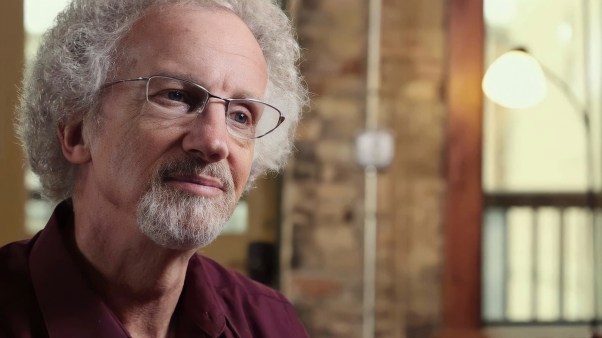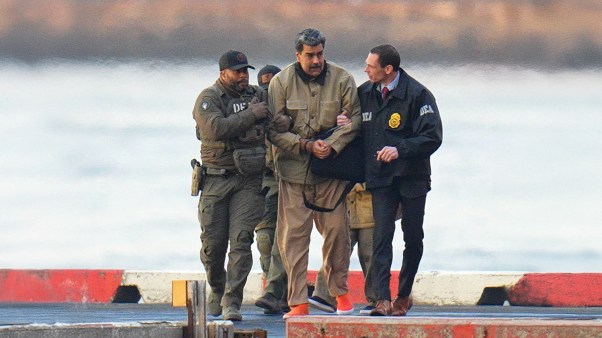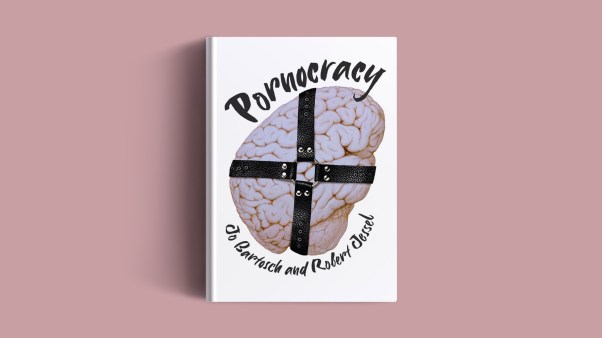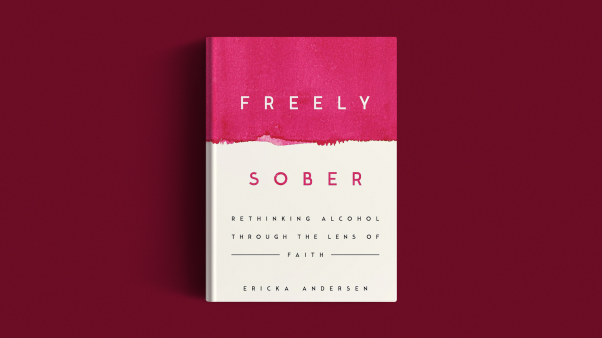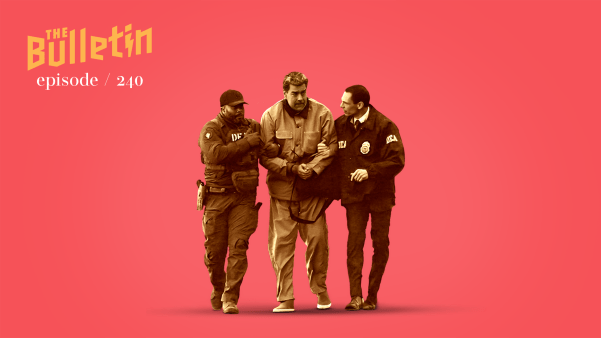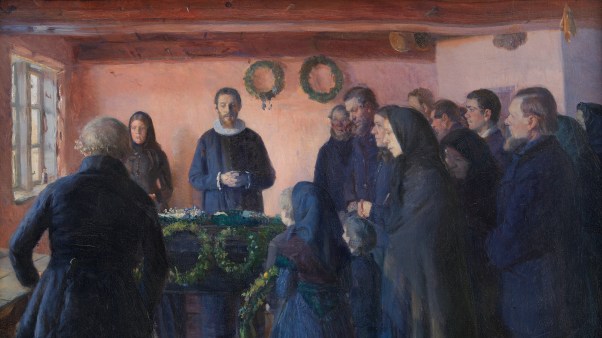Redeemer Presbyterian Church’s building on West 83rd Street in Manhattan does not call attention to itself. The Crunch gym next door has a bigger, louder sign and doors plastered with offers for memberships. Redeemer’s building of glass and neutral brick blends into the buildings around it, except that if you look up, a cross shoots up above the fifth story. The church’s founding pastor, Tim Keller, was reluctant to even buy it.
“For years Tim didn’t want to be a megachurch,” said Andrea Mungo, Redeemer’s first staffer for its diaconate in the 1990s. “He wasn’t interested in purchasing a building. For years it was, ‘We want to rent so we can focus our money and energy into local ministry.’”
Keller, who died in May, was a globally known preacher, bestselling writer, leader of a 5,000-member church before before stepping down, and founder of big organizations like The Gospel Coalition in 2007. He spoke before the UK parliament and at Google’s headquarters. But for most of his adult life, he built small. His fame was derivative of his local church work.
People like Mungo—as well as Yvonne Sawyer, Justin Adour, Sobeyda Valle-Ellis, Peter Ong, and Mark Reynolds—aren’t globally recognized names but were the faces of the local church in New York and then beyond. They built an ecosystem of local institutions that are carrying on Keller’s vision of evangelicalism away from the spotlight. They planted churches and started community development organizations and counseling centers that are spreading the gospel and serving the disenfranchised.
Keller did not follow the American evangelical tradition of networking with the powerful, like Billy Graham. He did not build a megachurch; Redeemer’s different campuses in 2015 separated into independent, smaller churches in anticipation of his stepping down. In 1991, Graham led a crusade in Central Park that drew 250,000 people. Redeemer at that time was a church of about 800.
What Keller built with the church members around him for most of his career was not stadium size but showed a healthier American evangelicalism built on smaller, lesser-known institutions. Keller called it “human scale” in his final address to Redeemer churches.
Months ago, the different Redeemer churches in the city asked Keller to record a message for a gathering of all the congregations—which happened to fall on May 19, the day Keller died. In what would be his final words to the congregations, Keller said that “to have three churches of 800 people is better than having one church of 2400 people.”
Multiple smaller churches working in collaboration gives the ability to build “ministries that are megachurch in their quality,” allowing them to have better discipleship, provide better pastoral care, and better serve the surrounding neighborhoods, he said.
He concluded, “Forget about your reputation. Jeremiah 45:5, this is what Jeremiah says to his secretary, Baruch. ‘Seekest thou great things for thyself? Seek them not.’ … Ministers very often come to New York City to make a name for themselves. … Do what you can to lift up God’s name.”
Keller’s evangelicalism was locally focused, media averse, and built on suffering. In Collin Hansen’s biography of Keller, his wife Kathy Keller recalled chasing a TV crew for The 700 Club away from Redeemer’s services on 9/11 and telling them never to return.
Redeemer staff from over the years told CT about the unofficial policy to reject all interview requests. Yvonne Sawyer, an early staffer at the church, remembered many instances of people telling Keller that he should write a book or do media appearances. Eventually Keller agreed to do media interviews to support the release of The Reason for God, but he was 58 at that point, and he still turned down more interview requests than he accepted.
“For such a long time he resisted,” Sawyer said. “He didn’t want it to become a celebrity cult.”
Keller knew that leading “a healthy church takes a lot of time,” said Mark Reynolds, who worked with Keller for 20 years at Redeemer and City to City, a church-planting organization formed out of Redeemer. When Keller started having to travel and speak after The Reason for God, that was always a tension, even as subsequent books came out—“How much travel do I have to do?”
Keller began as a young pastor in Hopewell, Virginia, population 23,000. He had a congregation of about 90 people made up of blue-collar workers without college degrees.
He often talked about how formative this time was. He visited church members in the hospital, went to high school graduations, did counseling, and helped a widow identify the body of her husband in the morgue, according to Hansen’s biography. The Kellers had congregants to their house for dinner and prayer, and one member who went through a divorce recalled to Hansen that the Kellers took him on vacation with them.
Keller’s time at this small church also prompted him to work on his dissertation on deacons, which later was distilled in his book Ministries of Mercy. He argued that deacons had taken on custodial tasks instead of serving those in need. Shortly after he founded Redeemer, he insisted on building a robust diaconate.
Andrea Mungo was the first staffer for Redeemer’s diaconate, creating with Keller a manual for diaconates that would end up being used in churches around the country. Mungo was a relatively new Christian and worked as a social worker in a drug-heavy neighborhood in the South Bronx. She began attending Redeemer in 1992, when it was meeting at a Seventh-day Adventist church.
After the service she met Keller at a welcome for newcomers in the church basement. He introduced her to Yvonne Sawyer, who he said was hoping to start a nonprofit doing mercy ministry that would be tied to Redeemer. The organization that Sawyer went on to start became Hope for New York, which is now a $5 million organization supporting all kinds of mercy ministries in the city.
“I was so excited to meet another woman who had a strong vision for mercy and justice ministry,” Mungo remembered. “When I came to New York and started going to Redeemer, it all came together: Wow, the church really needs to be in the forefront of loving our neighbors … and we also need to be preaching the true gospel and not some watered-down social justice gospel.”
Mungo joined Redeemer’s diaconate, which grew to the point that in a few years it needed a staff person. The Redeemer diaconate was made up of male and female deacons when the parent denomination, the Presbyterian Church in America, permitted only ordained male deacons.
Redeemer offered Mungo a part-time job, and she took a dramatic pay cut from her social worker job. She loved the work building the program and she soon became full-time. Hope for New York became Redeemer’s outward-facing mercy ministry to the poor, and the diaconate was the inward facing ministry to people in the congregation who were unemployed, without housing, or in mental health crisis.
Keller mentored her through building the program, focusing on a strong training and vetting component to becoming a deacon. Keller would do trainings and talks with the deacons. Mungo remembered him being accessible to everyone in those days. Keller didn’t have an actual office, but there was a room where he could hold meetings and counseling sessions. He did premarital counseling for Mungo and her eventual husband.
By the time terrorists attacked the city on 9/11, Mungo had already built an expanded diaconate staff in addition to the ordained deacon volunteers. “Clearly God was preparing us for 9/11, to even have paid staff to respond,” she remembered.
The attacks on 9/11 brought a surge of demand for Redeemer’s diaconate and outward-facing ministries. The church had had a counseling center for years, but after 9/11, it needed to hire a lot more counselors, quickly. Some Redeemer attenders had worked with organizations at Ground Zero; others had lost loved ones. They had all seen and smelled the destruction of thousands of lives.
Sobeyda Valle-Ellis, a Christian therapist and social worker who had moved to the city two months before the attacks with her church-planting husband David Ellis, was one that the church’s counseling center hired that September.
“We were all scared,” Valle-Ellis remembered. She and her husband attended Redeemer while preparing to plant a church. Keller’s preaching on suffering at that time reminded them that “God doesn’t guarantee a life free of suffering, but he gives us a suffering Lord who understands and undoes our aloneness in the midst of suffering,” she said.
Keller’s teaching on idolatry, too, helped her realize that she was clinging to safety more than Christ in the wake of the attacks. Hearing his preaching in that time “felt like seminary to me. … Our trust had to be practical and day to day.”
Valle-Ellis worked at Redeemer Counseling Services until 2014 when she left to start her own counseling center in the city. Heart Matters NYC Counseling now has five therapists and an internship program. Her center incorporates Keller’s framework that was also in Redeemer’s counseling center, but as the Spanish-speaking daughter of immigrants, she focuses on Christians who are Black, indigenous, and people of color.
By 2014, the early Redeemer members had spread like seeds in the wind. Mungo left in 2007 to go start a similar diaconate at a smaller church plant, Astoria Community Church in Queens. She built a diaconate like Redeemer’s but with the church’s own set of mercy ministries in the neighborhood: ESL classes, financial literacy classes, a Bible club, tutoring, and support for parents at risk of having their children put in the foster system.
“I didn’t have any desire to go bigger,” said Mungo. “The way we can best as smaller churches live this part of the gospel out is on a local level.”
Sawyer, whom Mungo met in the basement of the Seventh-day Adventist church, also spread the seeds of Redeemer. She was the first full-time staffer Redeemer hired in 1990. She built the systems for the quickly growing church. Then she launched Hope for New York. In the late 1990s, she moved to Miami, Florida, and started an organization that became Hope for Miami, which is also a nearly $5 million operation like Hope for New York.
Redeemer emphasizes tailoring ministries to the local context. “You’re not going to replicate Hope for New York,” Sawyer said. Hope for Miami came out of multiple churches and nonprofits in Miami rather than the one church in New York. “You do what works for your people.”
As nonprofits and counseling centers spread, Redeemer was planting churches in New York. Peter Ong later joined the staff at one of Redeemer’s first plants in 2000, Living Faith Community in Flushing, Queens. The church serves a largely immigrant community, and Ong eventually led its mercy and justice outreach.
Seven years prior to Living Faith’s launch, Ong was not a Christian. He was a college student at New York University and started going to Redeemer in 1993 because of a Christian woman he was dating. He remembered posing “obnoxious” questions to Keller at the question time the church held after the service.
“I don’t remember his answers, but I do remember that he was incredibly polite,” said Ong. Ong and the woman broke up, but he became a Christian a few years later.
Ong continued attending Redeemer and began working with the youth ministries of Chinese Christian Herald in Manhattan’s Chinatown. Eventually working at the early church plant Living Faith, Ong started a community development corporation out of the church, and then planted another Queens church, King’s Cross, with the help of City to City. Ong said as Bible Belt pastors parachuted into the city after 9/11, Redeemer began backing more “indigenous” church leaders to plant.
Senior City to City leader Mark Reynolds remembered a 250-page blue manual for church planting that they used for training, which then began to be used all over. As the church-planting operation grew, the church plants were often not in the denomination or Reformed. But all of City to City’s training was based in deep Reformed theology.
“Leaders wanted a set of … ‘Here’s seven things you need to do,’ or ‘Here’s the laws of this and this,’” said Reynolds. “We have a lot of practical resources … but we were primarily focusing on, how do you have deep awareness of yourself, your context, and the gospel so that you can bring a healthy church there?”
The local church planting became bigger with City to City in 2008, which came out of Redeemer’s in-house church planting center where Reynolds was working. The founding pastor of Living Faith, Stephen Ro, now also does City to City trainings in Korea. City to City is now working in 65 cities around the world and has planted about 1,000 churches.
Staff at City to City “were not interested in brand recognition or loyalty,” said Pastor Neil Powell, who led an effort to plant 20 churches in a decade in Birmingham, UK with support from City to City.
When Justin Adour moved to New York 16 years ago, he had never heard of Tim Keller. He grew up in the Assemblies of God and became a pastor in that denomination, working in various ministries in the Bronx. One day he went to a men’s group in the city where Keller spoke. Adour went home and Googled Keller; he and his wife, Angela, began reading everything Keller had written and listening to all his sermons. Adour’s theology “shifted,” he said. “We joke we’re Presby-costals.”
When Reformed Theological Seminary (RTS) opened its campus in New York, in partnership with City to City, Adour was in the first class. Keller taught some of the classes. Keller processed some of Adour’s theological wrestling with him and they got to know one another.
Keller was “deeply Reformed,” Adour said but “he had a way of communicating that extended beyond the Reformed tradition.” Both of Adour’s parents are Assemblies of God ministers, but they weren’t upset with his move toward Presbyterianism—they saw “the faithfulness of Redeemer in the city,” Adour said.
The RTS program meant that Adour was in seminary classes with pastors who were all based in New York. Many were Pentecostal, Baptist, and other traditions who wanted more theological training that was tailored to New York. Before the RTS program Adour’s relationships were mostly in the Assemblies of God, and now he found himself with friends in a variety of evangelical streams.
In 2019, Adour became the pastor for a new Redeemer plant, Redeemer East Harlem, serving one of the poorer neighborhoods in Manhattan. The church has about 100 attendees now and a ministry center hosting several nonprofits serving the neighborhood.
Evangelical church attendance has been growing in New York City for several decades now. Keller arrived in New York in 1989. Evangelical churches were more numerous and vibrant in the city’s outer boroughs, often among immigrants and the working class, but churches were sparse in the city center. Tony Carnes, publisher of A Journey Through NYC Religions, has tracked the trends of the city’s churches in detail for decades. He counted only 10 evangelical churches in New York’s “center city” (most of Manhattan) in 1975.
By 2000, Carnes counted 120 evangelical churches in center city. In 2019, that number was 308, and Carnes projects a count of 368 for 2024. From 2009 to 2019, evangelical church attendance grew 65 percent in Manhattan’s center city, according to Carnes’s data; from 87,271 to 144,144 attending church on average.
“First and foremost, [Keller’s] ministry was in the local church,” said Adour. “His influence in all these different sectors was a function of how he discipled people in his congregation, who then went and worked in all these different areas of life. … He developed a church culture that was able to not only exist beyond him but flourish beyond him.”
This article has been updated to reflect that Peter Ong was not on staff at Living Faith Community Church when it was first planted.
Emily Belz is CT’s news writer.






